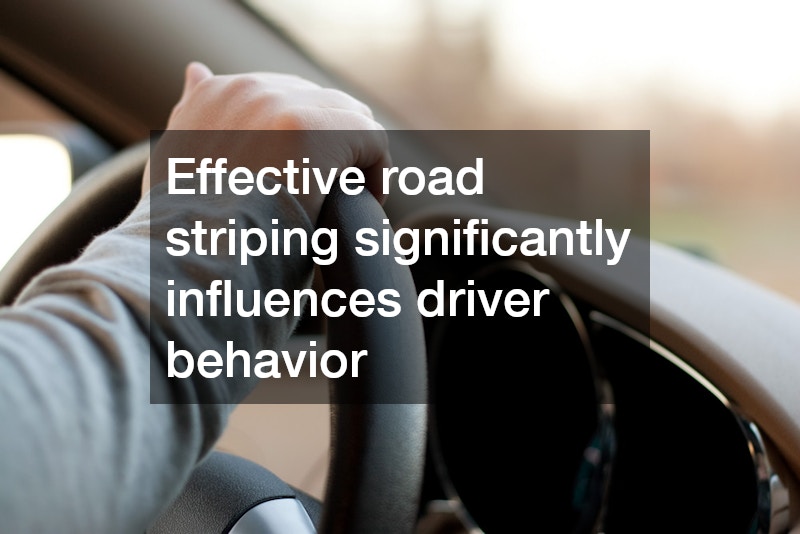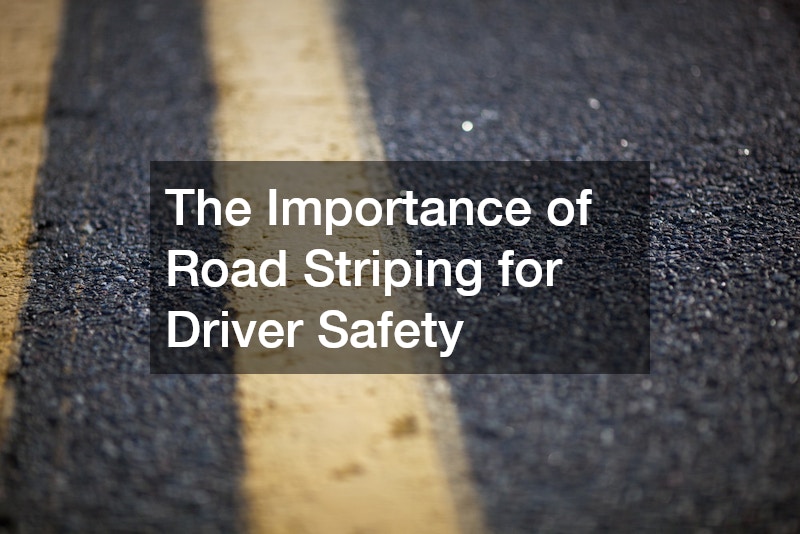
Road striping plays a critical role in ensuring driver safety on the roads. It helps in guiding vehicles, indicating lane changes, and providing essential information to drivers. In this article, we will explore the importance of road striping, common questions surrounding it, and the impact it has on safety.
As urban populations continue to grow, the need for effective road management strategies becomes increasingly vital. Road striping is one such strategy that aids in the smooth flow of traffic and minimizes accidents. By clearly delineating lanes and other crucial areas on the road, striping creates a structured environment where drivers can navigate more effectively.
In addition to improving traffic flow, road striping serves an educational purpose. It informs drivers about road rules, lane changes, and important information such as pedestrian crossings and stop lines. This education is essential in a world where distractions can easily lead to unsafe driving behavior.
The Main Purpose of Road Striping
Road striping serves several essential functions, including lane delineation, guiding vehicle movement, and enhancing overall road safety. The primary purpose of road striping is lane delineation; it helps drivers stay within their designated lanes, thus reducing the likelihood of side-swipe collisions. Clear markings ensure that drivers are aware of their lane boundaries and any upcoming lane merges, which is especially important in high-traffic areas.
Another crucial function of road striping is to provide direction and guidance. For instance, arrows painted on the road indicate turning lanes, allowing drivers to navigate intersections safely. This guidance reduces confusion and ensures that all motorists are aware of the correct movements they should make.
Moreover, road striping enhances overall road safety by clearly marking areas where caution is required, such as pedestrian crossings and school zones. This increased visibility encourages drivers to slow down and remain vigilant, reducing the chances of accidents in these high-risk areas.
The Impact on Driver Behavior
Effective road striping significantly influences driver behavior by improving lane discipline, reducing accidents, and fostering a safer driving environment. When drivers can easily see lane markings, they are more likely to adhere to their designated lanes, which promotes a smoother traffic flow. Improved lane discipline often leads to fewer aggressive driving behaviors, fostering a calmer driving atmosphere on busy roads.
Furthermore, the clear visual cues provided by well-maintained road striping can help reduce the likelihood of accidents. For instance, drivers are less likely to drift into adjacent lanes, and they can better estimate the distances between themselves and other vehicles. This awareness is crucial in preventing collisions and ultimately saving lives.
The Materials Used for Striping
Various materials, such as paint, thermoplastic, and tape, are used for road striping due to their durability, visibility, and effectiveness in different weather conditions. Traditionally, road striping paint was the primary choice, favored for its cost-effectiveness and ease of application. However, regular wear and tear from vehicles and environmental factors often necessitate frequent repainting. Today, advanced materials like thermoplastics are becoming more prevalent because they provide enhanced durability and longer-lasting visibility.
In addition to paint and thermoplastics, specialized road marking tapes are available for use in high-traffic areas. These tapes can withstand harsher conditions than regular paint, making them a good choice for road markings that require exceptional durability. These materials are designed to reflect light at night, which significantly improves visibility during low-light conditions.
Understanding the various materials used in road striping is crucial for maintaining effective road safety measures. The selection of appropriate materials can significantly influence the longevity and visibility of road markings, ultimately ensuring that they continue to serve their essential functions without frequent replacements.
The Frequency of Maintenance
Regular maintenance and repainting of road striping are vital to ensure visibility and effectiveness, with specific intervals varying based on traffic volume and environmental factors. Typically, road striping should be assessed at least once a year, especially in areas with heavy traffic. However, this frequency can increase in environments where adverse weather conditions are prevalent, such as heavy rainfall or snow, which can deteriorate the quality of the markings quickly. Additionally, high-traffic zones might necessitate more frequent evaluations due to the wear and tear experienced.
Municipalities often establish guidelines for the maintenance of road striping based on empirical data from their respective regions. For instance, in regions with harsher climates or heavier traffic loads, the need for frequent assessments and repainting becomes even more critical to maintain driver safety effectively.
By staying proactive in the maintenance of road striping, safety officials can prevent the issues associated with faded markings, ensuring that drivers have the visual cues they need to navigate safely. Ongoing updates and attention to road markings are essential elements of a comprehensive road safety strategy.
The Consequences of Poor Striping
Poor or faded road striping can lead to confusion among drivers, an increased risk of accidents, and overall compromise in road safety. When markings become unclear or indistinguishable, drivers may find it difficult to assess lane boundaries and may inadvertently drift into neighboring lanes. This confusion can create hazardous driving conditions, which can lead to aggressive maneuvers and potential collisions.
Moreover, poor visibility of road markings can also affect pedestrian safety. In areas where crosswalks are poorly marked, pedestrians may find it challenging to navigate safely, increasing the risk of accidents between vehicles and foot traffic. A lack of clear demarcation can create a false sense of security among pedestrians, putting them at risk.
The cumulative effects of faded road striping on driver behavior reduce overall road safety standards. Increased accidents can lead to higher insurance rates and greater costs for municipalities in terms of emergency services and road repairs. Investing in regular maintenance of road striping is essential to mitigate these consequences effectively.
Road striping is an indispensable component of roadway safety that assists in guiding and managing traffic effectively. By understanding its importance and ensuring proper maintenance, we can contribute to safer driving conditions for everyone.
As we navigate an increasingly complex transportation landscape, attention to detail in road management is crucial. Road striping aids in establishing a structured driving environment that is essential for both safety and efficiency on our roads.
It is a collective responsibility to prioritize road safety through initiatives like effective road striping. By investing time and resources into maintaining and improving road markings, authorities can significantly reduce the chances of accidents, fostering a safer experience for drivers and pedestrians alike.

